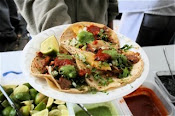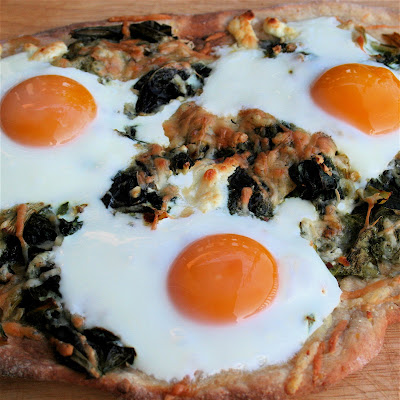
Oh, how I wish I could take credit for this ingenious creation. Alas, I cannot. A very good friend of mine, after observing my egg obsession, kindly directed me to this
Apartment Therapy site, offering me yet another way to enjoy my beloved eggs. (Thanks, Amanda!) The eggs, cracked atop the pizza during the last few minutes of baking, retain a runny yolk, which, when cracked, ooze into the crust and toppings — sautéed Swiss chard and cheese, in this case — making each bite unbelievably tasty. This combination was particularly yummy, but I suspect these eggs would enhance various topping combinations, from sausage and peppers to tomato and basil to ricotta and spinach — oh, the possibilities are endless.
Not too long ago, I made a
flatbread with brie, prosciutto and watercress — a recipe I spotted in a recently published cookbook
Blue Eggs, Yellow Tomatoes. Well, I must confess that the dough recipe I have enclosed below is far superior. Adapted from Todd English's
The Figs Table, this wet dough — admittedly a little difficult to work with — yields a thin and crispy crust. I'm not sure why I bother experimenting with any other recipe — my family (my mother) has been making the Figs' pizza dough for years with great success.
One note: Unless you have a very powerful food processor, don't use one. I burned out the engine on mine making this recipe and had to finish the kneading by hand. Use a stand mixer if you have one or knead by hand from the beginning.
 This recipe makes a very wet pizza dough. Once baked, however, the dough becomes a light, thin, crisp crust. My family has been using this recipe for years, and one of our favorite topping combinations includes caramelized onions, grapes, blue cheese, Parmigiano Reggiano and fresh basil. This dough freezes well, too: After the two-hour rise, punch it down, wrap it in plastic and throw in the freezer. When ready to use it, let the dough sit at room temperature for a few hours prior to cooking. Pizza Dough
This recipe makes a very wet pizza dough. Once baked, however, the dough becomes a light, thin, crisp crust. My family has been using this recipe for years, and one of our favorite topping combinations includes caramelized onions, grapes, blue cheese, Parmigiano Reggiano and fresh basil. This dough freezes well, too: After the two-hour rise, punch it down, wrap it in plastic and throw in the freezer. When ready to use it, let the dough sit at room temperature for a few hours prior to cooking. Pizza DoughAdapted from Todd English’s
The Figs TableMakes 4 8- to 10-inch pizzas (Serves 1 to 2 people per pizza)¼ cup whole wheat flour
3½ cups all-purpose flour, plus additional for rolling
2 teaspoons kosher salt
1 2/3 cups lukewarm water
2 teaspoons sugar
2 teaspoons active-dry yeast
2 teaspoons olive oil
1. Place the flours and salt in a mixer fitted with a dough hook. Combine the water, sugar and yeast in a small bowl and let sit for five minutes until the mixture bubbles slightly. Add the olive oil and stir. With the mixer on low, gradually add the oil-water mixture into the bowl. Knead until the dough is firm and smooth, about 10 minutes. The dough will be very wet and sort of difficult to work with. I liberally coat my hands with flour before attempting to remove it.
2. Divide the dough into four balls, about 7½ ounces each. Line two cookie sheets with parchment paper. (Be sure to oil the parchment paper.) Place two balls on a sheet. Lightly rub the balls with olive oil or lightly coat with cooking spray, then cover loosely with plastic wrap. The dough is very sticky and wet, so, be sure to coat the balls or the plastic with oil. Let the balls rise in a warm spot until they have doubled in bulk, about two hours.
3. To roll out the dough: Dab your fingers in flour and then place one ball on a generously floured work surface. Press down in the center with the tips of your fingers, spreading the dough with your hand. When the dough has doubled in width, use a floured rolling pin and roll out until it is very thin, like flatbread. The outer portion should be a little thicker than the inner portion.
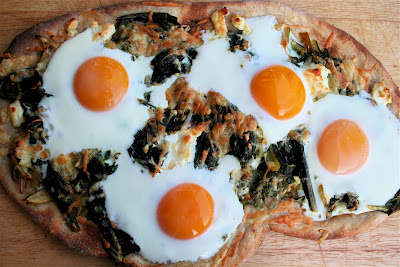 Breakfast Pizza:
Breakfast Pizza: Sorry for these undetailed instructions, but I really just threw this together.
Serves 2cornmeal
olive oil
Swiss chard, washed, stems diced, leaves roughly chopped
garlic, minced
kosher salt
crushed red pepper flakes
Grated Parmigiano Reggiano and cheddar and crumbled goat cheese (use any grated cheese you have on hand)
4 eggs
1. Preheat the oven to 500ºF. Follow the instructions above for rolling out the dough. Sprinkle some cornmeal on a baking sheet and transfer the dough to the baking sheet.
2. Meanwhile, sauté the Swiss chard stems in the oil until slightly tender. Increase the heat to high, add the greens, season with salt, red pepper flakes and garlic. Rearrange the greens with tongs until nicely wilted. Turn off the heat and set aside.
3. Top pizza with a thin layer of greens and cover with the grated cheese. Place in the oven for about eight minutes, or until about three minutes away from being done. Remove from the oven and crack the eggs over the pizza. Return to the oven, cooking just until the whites are set and the yolks are slightly runny.
4. Serve immediately.

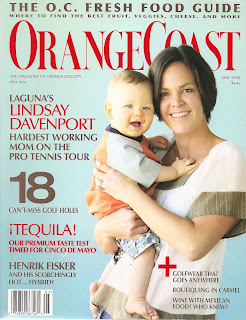 Unlike most filled pasta dishes, particularly the cheese-laden ready-made varieties, these cannelloni taste light — or as light as a cannelloni can taste. And the women at DCF have somehow accomplished this without sacrificing any flavor: From the thin, semolina dough to the subtly flavored spinach filling, these cannelloni are a real treat. Ben made a really good point, too, noting that "The cannelloni aren't sloppy." Filled pastas such as manicotti and lasagna — think school lunch line — so often are overly cheesy and watery and heavy. These are not.
Unlike most filled pasta dishes, particularly the cheese-laden ready-made varieties, these cannelloni taste light — or as light as a cannelloni can taste. And the women at DCF have somehow accomplished this without sacrificing any flavor: From the thin, semolina dough to the subtly flavored spinach filling, these cannelloni are a real treat. Ben made a really good point, too, noting that "The cannelloni aren't sloppy." Filled pastas such as manicotti and lasagna — think school lunch line — so often are overly cheesy and watery and heavy. These are not. The other day, however, I remembered some words of wisdom from my grandmother. Sometime last year, my grandmother started buying curly parsley again, preferring its flavor to Italian. And I think, (correct me if I'm wrong, Gramma), an episode of the Barefoot Contessa on the Food Network inspired her to make the switch. In any case, the other day at Trader Joe's, all that remained was a carton of the curly variety, and so, I bought it — it was delectable. Very flavorful. I used it all week, even in a recipe for cottage cheese muffins which I cannot wait to share with you. So, I guess all I'm saying is not to overlook curly parsley if you cannot find Italian.
The other day, however, I remembered some words of wisdom from my grandmother. Sometime last year, my grandmother started buying curly parsley again, preferring its flavor to Italian. And I think, (correct me if I'm wrong, Gramma), an episode of the Barefoot Contessa on the Food Network inspired her to make the switch. In any case, the other day at Trader Joe's, all that remained was a carton of the curly variety, and so, I bought it — it was delectable. Very flavorful. I used it all week, even in a recipe for cottage cheese muffins which I cannot wait to share with you. So, I guess all I'm saying is not to overlook curly parsley if you cannot find Italian.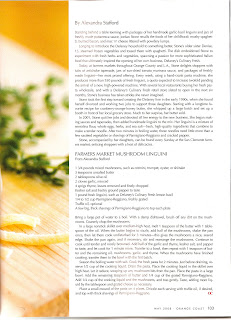 And lastly, if you are interested, check out this article, "Linguini Lust," in Orange Coast Magazine. The article is not on-line, so you'll have to click on the image at left to read it. Though you may feel you've heard enough from me about Delaney's Culinary Fresh, here you'll get a little more insight into Stone's background. She began her fresh pasta business by making compound-butters and selling them in front of her local grocery store. As a single mother, she spent many years working two jobs to support her three daughters — it's quite an inspiring story.
And lastly, if you are interested, check out this article, "Linguini Lust," in Orange Coast Magazine. The article is not on-line, so you'll have to click on the image at left to read it. Though you may feel you've heard enough from me about Delaney's Culinary Fresh, here you'll get a little more insight into Stone's background. She began her fresh pasta business by making compound-butters and selling them in front of her local grocery store. As a single mother, she spent many years working two jobs to support her three daughters — it's quite an inspiring story.